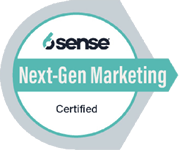In the old days of marketing, there were only limited channels available to connect companies with potential audiences. Marketers simply had to send their message to all these channels and just hope that the message would stick with somebody. However, with the invention of the internet and the digital revolution, marketers are facing a whole new problem in having many mediums to chose from. Especially digitally, there are over a billion websites and consumers are completing 5.6 million searches a day on Google alone. While this plethora of channels to reach your audience may seem like a gift, it also creates a challenge in knowing which channels will provide you with quality leads.
In order to combat this issue, Google has developed technology in order to better understand and target audiences. Using filters to categories such as age, gender and income, Google has created tools to help marketers ensure their messages aren’t being shown to people who can’t or won’t be effectively reached. However, up to this point Google has mainly focused its filters on B2C or business to consumer marketing. Recently Google began beta testing for a new method of targeting audiences that focuses more on B2B or business to business marketing.
Let’s say you are a development or production company looking to find a wholesaler, Google has now created tools which will allow you to only target specifically qualified audiences that have the potential to become real clients. Beyond just being able to identify individuals that represent companies rather than private interests, Google has taken it a step further and found ways to be even more specific in their targeting.
First when marketing, companies can choose the size of the company they hope to target. The company size filter is divided into 4 main categories: small employers (with 1-249 employees), midsize employer (with 250-999 employees), large employer (with 1K-10K employees) and very large employers (with 10K+ employees).
The second element of Google’s corporate targeting divides potential audiences by industry. Google divided the potential audiences into 8 main categories: construction, financial, hospitality, real estate, education, healthcare, manufacturing and technology. These filters are just as easy to use as the consumer targeting of the past. As the picture below shows, these new corporate targeting tools are located under the audience tab and listed under “Browse”->”Who they are”->“employment”.

As one of the few companies given access to this beta launch, Connection Marketing is thrilled to explore the capabilities of these exciting new tools to enhance your business. We are always looking for new ways to optimize campaigns by ensuring that our clients are only targeting audiences who can become qualified leads. Although this tool is currently only available in terms of Google search advertising, we look forward to seeing how this technology will continue to develop and hopefully become implemented into other mediums of Google advertising. To learn more about this new Google Ads feature and for the best corporate targeting strategy, contact us today.








